
Project Japan, Metabolism Talks…
| Autor: | Hans Ulrich Obrist, Rem Koolhaas |
| Nakladatelství: | Taschen |
| Rok vydání: | 2011 |
| ISBN: | 978-3-8365-2508-4 |
| Formát: | 720 stran, brožovaná |
| Jazyk: | anglicky |
| Běžná cena: | 1129 Kč |
| Naše cena: | 1000 Kč (bez 0 % DPH: 1 000,00 Kč) |
| 40,65 € (bez 0 % DPH: 40,65 €) | |
| Skladem: | 0 ks (standardní doba expedice do 5 dnů) |
Back to the future
Visionary architecture in postwar Japan
“Once there was a nation that went to war, but after they conquered a continent their own country was destroyed by atom bombs... then the victors imposed democracy on the vanquished. For a group of apprentice architects, artists, and designers, led by a visionary, the dire situation of their country was not an obstacle but an inspiration to plan and think… although they were very different characters, the architects worked closely together to realize their dreams, staunchly supported by a super-creative bureaucracy and an activist state... after 15 years of incubation, they surprised the world with a new architecture—Metabolism—that proposed a radical makeover of the entire land... Then newspapers, magazines, and TV turned the architects into heroes: thinkers and doers, thoroughly modern men… Through sheer hard work, discipline, and the integration of all forms of creativity, their country, Japan, became a shining example... when the oil crisis initiated the end of the West, the architects of Japan spread out over the world to define the contours of a post-Western aesthetic....” —Rem Koolhaas / Hans Ulrich Obrist
Between 2005 and 2011, architect Rem Koolhaas and curator Hans Ulrich Obrist interviewed the surviving members of Metabolism—the first non-western avant-garde, launched in Tokyo in 1960, in the midst of Japan’s postwar miracle. Project Japan features hundreds of never-before-seen images—master plans from Manchuria to Tokyo, intimate snapshots of the Metabolists at work and play, architectural models, magazine excerpts, and astonishing sci-fi urban visions—telling the 20th century history of Japan through its architecture, from the tabula rasa of a colonized Manchuria in the 1930s to a devastated Japan after the war, the establishment of Metabolism at the 1960 World Design Conference in Tokoy, to the rise of Kisho Kurokawa as the first celebrity architect, to the apotheosis of Metabolism at Expo ’70 in Osaka and its expansion into the Middle East and Africa in the 1970s. The result is a vivid documentary of the last moment when architecture was a public rather than a private affair.
Exhibition Mori Museum, Tokyo
Further reading
The editors and authors:
Rem Koolhaas is a co-founder of the Office for Metropolitan Architecture. Having worked as a journalist and script writer before becoming an architect, in 1978 he published Delirious New York. In 1995, his book S,M,L,XL summarized the work of OMA and established connections of contemporary society and architecture. Amongst many international awards and exhibitions he received the Pritzker Prize (2000) and the Praemium Imperiale (2003).
Hans Ulrich Obrist (born 1968) is a curator, critic and historian. He is currently Co-director of Exhibitions and Programmes and Director of International Projects at the Serpentine Gallery, London. Obrist is the author of The Interview Project, an extensive ongoing project of interviews.
Visionary architecture in postwar Japan
“Once there was a nation that went to war, but after they conquered a continent their own country was destroyed by atom bombs... then the victors imposed democracy on the vanquished. For a group of apprentice architects, artists, and designers, led by a visionary, the dire situation of their country was not an obstacle but an inspiration to plan and think… although they were very different characters, the architects worked closely together to realize their dreams, staunchly supported by a super-creative bureaucracy and an activist state... after 15 years of incubation, they surprised the world with a new architecture—Metabolism—that proposed a radical makeover of the entire land... Then newspapers, magazines, and TV turned the architects into heroes: thinkers and doers, thoroughly modern men… Through sheer hard work, discipline, and the integration of all forms of creativity, their country, Japan, became a shining example... when the oil crisis initiated the end of the West, the architects of Japan spread out over the world to define the contours of a post-Western aesthetic....” —Rem Koolhaas / Hans Ulrich Obrist
Between 2005 and 2011, architect Rem Koolhaas and curator Hans Ulrich Obrist interviewed the surviving members of Metabolism—the first non-western avant-garde, launched in Tokyo in 1960, in the midst of Japan’s postwar miracle. Project Japan features hundreds of never-before-seen images—master plans from Manchuria to Tokyo, intimate snapshots of the Metabolists at work and play, architectural models, magazine excerpts, and astonishing sci-fi urban visions—telling the 20th century history of Japan through its architecture, from the tabula rasa of a colonized Manchuria in the 1930s to a devastated Japan after the war, the establishment of Metabolism at the 1960 World Design Conference in Tokoy, to the rise of Kisho Kurokawa as the first celebrity architect, to the apotheosis of Metabolism at Expo ’70 in Osaka and its expansion into the Middle East and Africa in the 1970s. The result is a vivid documentary of the last moment when architecture was a public rather than a private affair.
- Oral history by Rem Koolhaas and Hans Ulrich Obrist
- Extensive interviews with Arata Isozaki, Toshiko Kato, Kiyonori Kikutake, Noboru Kawazoe, Fumihiko Maki, Kisho Kurokawa, Kenji Ekuan, Atsushi Shimokobe, and Takako and Noritaka Tange
- Hundreds of never-before-seen images, architectural models, and magazine excerpts
- Layout by award-winning Dutch designer Irma Boom
Exhibition Mori Museum, Tokyo
Further reading
The editors and authors:
Rem Koolhaas is a co-founder of the Office for Metropolitan Architecture. Having worked as a journalist and script writer before becoming an architect, in 1978 he published Delirious New York. In 1995, his book S,M,L,XL summarized the work of OMA and established connections of contemporary society and architecture. Amongst many international awards and exhibitions he received the Pritzker Prize (2000) and the Praemium Imperiale (2003).
Hans Ulrich Obrist (born 1968) is a curator, critic and historian. He is currently Co-director of Exhibitions and Programmes and Director of International Projects at the Serpentine Gallery, London. Obrist is the author of The Interview Project, an extensive ongoing project of interviews.

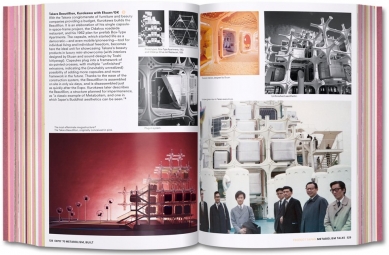
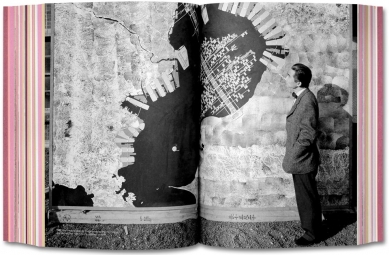
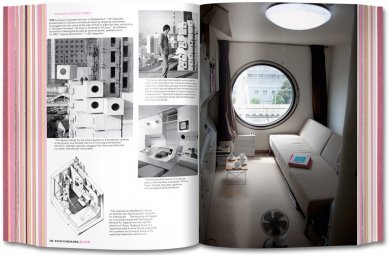

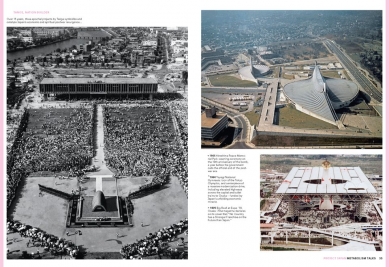
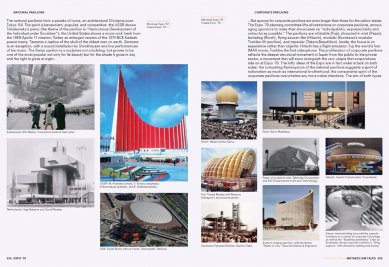
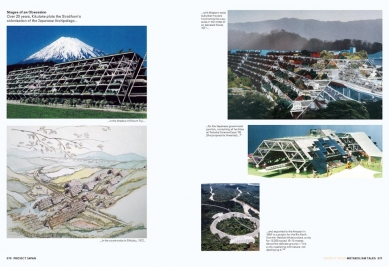
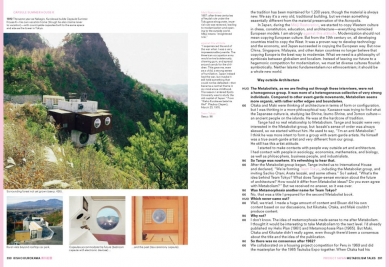
Referenční stavby
Související
|
|
1 komentář
přidat komentář
Předmět
Autor
Datum
apoteóza čtenářova
inspektor švihák
04.03.15 02:12
zobrazit všechny komentáře















